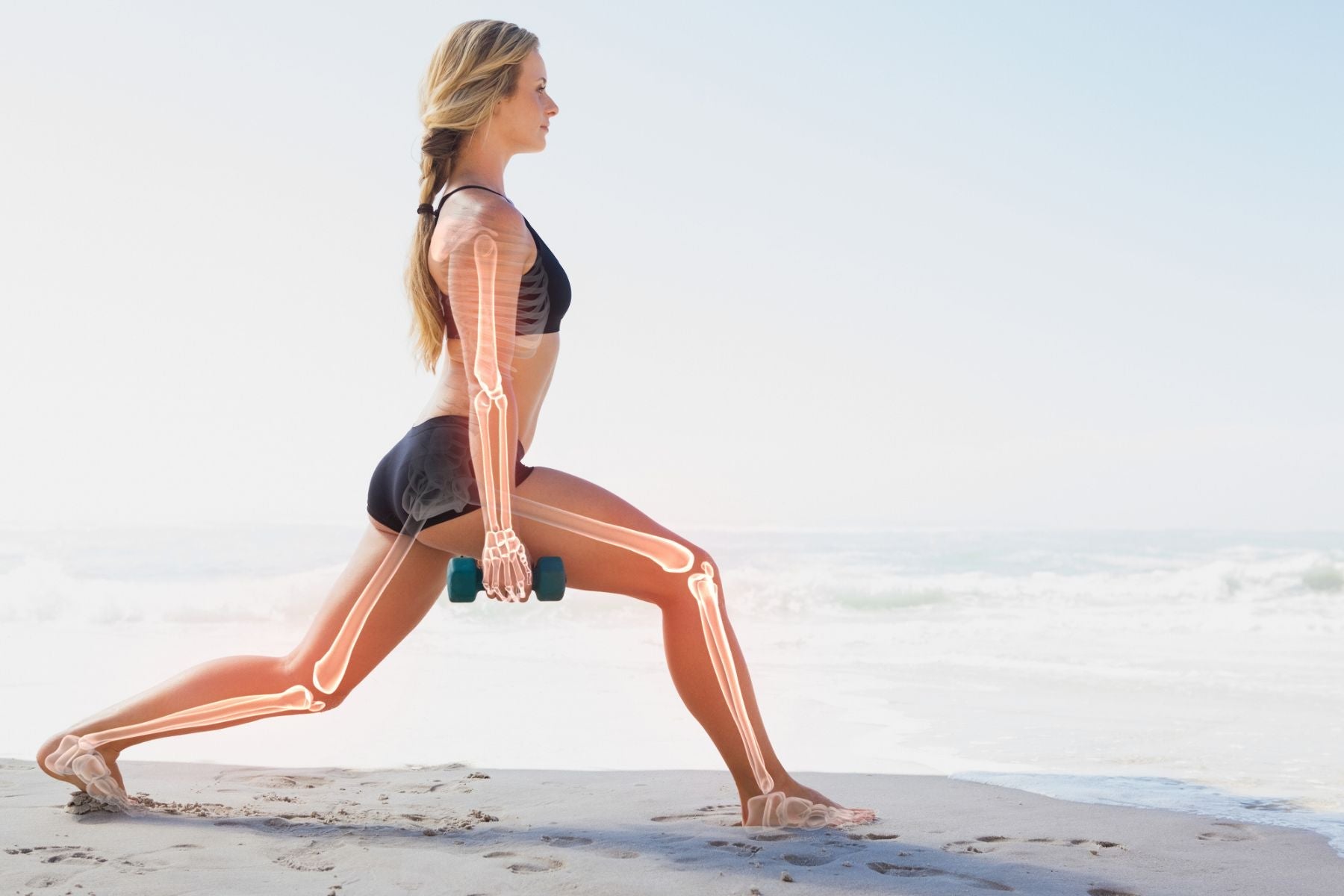
The Importance of Bone Health for Women: A Comprehensive Guide for Independent Health Store Owners
Women are still the primary customers within independent health stores here in the UK. And if any of them fall within the age range of 45 and up, chances are you’re having conversations about bone health.
Female sex hormones and bone health go hand in hand, and not all customers will be aware of the connection.
Independent health stores can play a vital role in promoting wellness within communities, and educating consumers about the importance of nutrition, and the supportive possibilities of supplements. In this blog, we explore factors affecting bone health, the significance of preventive measures, and tips on how you can support your customers in maintaining strong bones throughout their lives.
Understanding the Lifecycle of Bone Health in Women
1. Bone Development in Young Women (Ages 20-30)
During the early adult years, women build bone mass, reaching their peak bone density in their late 20s. Hormones, particularly estrogen, play a significant role in promoting strong bone structure. Promoting optimal bone health can look like focusing on:
- Magnesium and Vitamin D: These nutrients are essential for bone formation as they promote calcium uptake and storage. Calcium-rich foods are also a good recommendation, which go beyond dairy and also include foods like dark leafy greens, almonds, tofu, and small tinned fish with bones in. Vitamin D is especially necessary during the darker, winter months, and in those with higher melanin in the skin -this can mean vitamin D production is lower.
- Regular Exercise: Weight-bearing activities such as walking, jogging, and strength training help build and maintain bone density.
2. Midlife and Hormonal Changes (Ages 30-50)
By age 30, we would expect bone health to be good, with little impact from hormonal changes within someone with regular minerals in the diet and a regular cycle. Pregnancy and breastfeeding, which introduces changes in body composition, higher nutrient needs, and hormonal fluctuations, can impact bone health. The classic saying ‘what the baby needs to grow, will come from the mother’s body’ highlights a general knowledge of how womens’ bodies undergo major changes throughout pregnancy and breastfeeding, and without some corrective nutrient supplementation during these times, women can lack vital nutrients for recovery and health ongoing.
Gradual bone loss can occur as oestrogen declines heading into perimenopause, which can be as early as early 40s. Declining oestrogen impacts bone health because oestrogen directly influences bone mineral density and reabsorption (calcium taken from the bones and into circulating blood). Here are some ways to support bone health leading up to menopause:
- Balanced Nutrition: Continued emphasize the importance of calcium and all the co-factors for calcium absorption -Vitamin D, Magnesium, and Vitamin K2. Foods like nuts, seeds, and bananas, algae, moss… can be beneficial for general mineral support.
- Consider natural oestrogen-supporting supplements, like isoflavones, a well researched phyto-oestrogen, and herbs like rosemary and red clover.
- Lifestyle Choices: Avoiding things like smoking, and limiting alcohol intake, as both can contribute to poor bone health through mechanisms as simple as negatively affecting nutrient absorption. Managing stress, and promoting sleep, is especially important during periods of physical and/or hormonal changes. It is during sleep that the body promotes healing, and recent research suggests women actually need more than the standardised ideal of 7 or 8 hours sleep.
3. Post-Menopause (Ages 50-70)
After menopause, women typically experience accelerated bone loss due to significantly decreased estrogen levels, increasing the risk of osteoporosis. This is a critical time for intervention. Some research suggests that in the first 3 years of menopause, between 3-5% bone loss can occur yearly. Some suggestion include:
- Bone Density Testing: Encouraging women to talk to their healthcare providers about bone density tests to assess their bone health and risk for osteoporosis.
- Supplements: All the above are still relevant -Vitamin D, K2, magnesium, but calcium can also be suggested. Natural forms of calcium, like those from seaweed are sustainable and can contain a host of other minerals as well. Omega 3 fatty acids are also encouraged to promote connective tissue health, including ligaments and tendons.
- This is definitely the time to start talking about oestrogen replacements. Natural plant-based oestrogen-containing supplements may promote circulating oestrogen, now that the body itself is producing much less.
- Weight-Bearing Exercises: Continue to stress the importance of exercise, focusing on strength training and balance exercises to reduce the risk of falls and fractures.
Educating Customers
The health store setting is a great place to introduce customers to supportive health concepts and nutrient information. Educating and empowering customers to make informed decisions about their health is a core part of why we do what we do.
When it comes to topics like bone health, curating a selection of products can work really well to get conversations started and raise awareness on specific issues. Promoting bone health among women from age 20 up, through to post menopause, is essential for those weaning to prevent osteoporosis and other bone health issues, whether it runs in the family or not. Focusing on womens’ health is extremely important in a society that does not prioritise research into women-specific health and health concerns, and promoting womens’ health in store supports health stores because they are your primary customer. We support each other. Bone Health month is June here in the UK, but we don’t have to wait until then to talk about it!
Reach out to Savant to hear about our range of bone-supporting products or request training!
